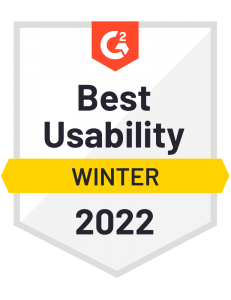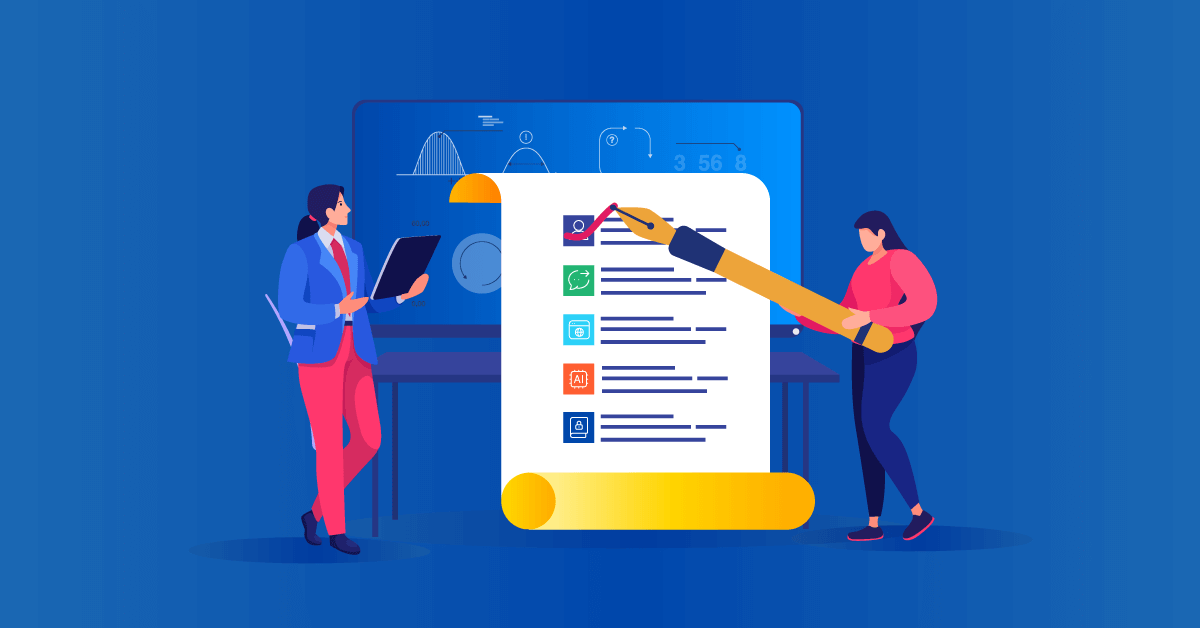- eLearning myth #1: Corporate eLearning platforms are expensive and designed for big organizations
- eLearning myth #2: You need an IT department to deploy your own company-wide eLearning solution
- eLearning myth #3: You need an expensive instructor or instructional designer
- eLearning myth #4: eLearning is all automatic
- eLearning myth #5: Employees don’t like eLearning
- eLearning myth #6: It’s only for technologically-minded learners
- eLearning myth #7: There’s no scope for interaction
- eLearning myth #8: You can’t measure success or interaction
- eLearning myth #9: It has to be done in the employee’s own time
- eLearning myth #10: It makes in-person training redundant
- Build your training the way it suits you
Myths are widely held misconceptions. And, on the surface, they may seem harmless. (After all, if so many people have believed them for so long, they can’t be that bad, right?)
Well, there’s another myth right there.
The truth is, if you’re a corporate eLearning professional, myths are damaging. They block progress. They allow inefficiencies, outdated beliefs, and clunky practices and processes to fester unchecked. And they stand in the way of informed change, and the development of your employees and your business.
But the good news is those myths can be busted.
We’ve taken 10 corporate eLearning myths—common myths most of you may have encountered—and uncovered the truth.
So, whether it’s convincing your C-suite, your IT experts or instructional designers, your employees, or yourself, you can assess corporate eLearning fairly, using facts, not fiction.
Let the unraveling begin…
eLearning myth #1: Corporate eLearning platforms are expensive and designed for big organizations
When eLearning first hit this scene over a decade ago, investing in a commercial LMS would have used a big chunk of a company’s L&D budget.
Primarily, on-premise platforms, businesses would have to pay for the system outright and run them off their own servers. And, yes, because of this, functionality was designed to support corporate training in larger-scale operations.
This changed quickly though. Greater commercial choice, changing market forces, and advances in cloud technology, all drove costs down. With no software to buy or install, no servers to maintain, the option to rent on a monthly basis, and no large upgrade costs to contend with, corporate eLearning soon became an option for small businesses as well as enterprise organizations.
Evolving fast to cater to businesses of every size and type, LMS providers introduced flexible and wide-ranging pricing plans. And design became more accessible, too.
So, no, eLearning isn’t an exclusive members’ club. It’s accessible to all budgets. Add a global skills shortage and increasingly remote workforce to the mix, and instead of asking “Can we afford eLearning?”, most businesses are now asking: “Can we afford not to use eLearning?”
Train your teams without breaking the bank
Deliver online courses in just a few clicks with TalentLMS.
The training platform that users consistently rank #1.
eLearning myth #2: You need an IT department to deploy your own company-wide eLearning solution
In 2000 maybe.
But ever since the advent of cloud computing and Software as a Service (SaaS) eLearning solutions, even a small team is able to roll out an online training program. All that’s needed is to register for an account.
When choosing a cloud LMS, there are no complicated server installations to arrange. Your corporate training platform takes care of the IT and all ongoing maintenance for you. So even small startups without dedicated IT departments or specialists can benefit from online corporate training.
eLearning myth #3: You need an expensive instructor or instructional designer
Not really.
Sure, you may (there are no guarantees here) get better results from a professional instructor. But that comes at a price. Besides their pay, you’ll have to spend time and resources familiarizing them with your company’s particular training needs. And that can be a big disadvantage.
In a recent survey, 78% of organizations prefer to use their own internal training programs because it’s easier than looking externally for content or 3rd party providers that suit their needs.
The thing is, you don’t have to have the “best” course to achieve the best outcomes. A “good” course that’s quick to produce and tied closely to your organizational goals, makes better business sense. And it’s usually just as effective as a ground-breaking corporate learning program that’s expensive, complicated to create, and a drain on your HR resources.
You don’t need an instructional designer, either. Using an LMS for corporate learning, you can repurpose informal content (like PowerPoint presentations and Word documents) you’ve already created to train employees. Just drag and drop them into your LMS and add in multimedia content, tests, and gamification using your eLearning platform. Ta-da! Formal, bespoke eLearning lessons designed in a flash.
Plus, for standard employee training topics (compliance, wellbeing, finance, and MS Office skills, for example), there are plenty of professionally made, off-the-shelf courses you can source straight from your LMS platform. Each one already researched, written, and reviewed by subject matter experts and senior instructional designers.
Meet TalentLibrary™
A growing collection of ready-made courses that cover the soft skills
your teams need for success at work
![]()

eLearning myth #4: eLearning is all automatic
One of the big benefits of using a corporate eLearning platform is that it automates a lot (if not all) of the admin involved in creating and managing corporate training programs. This is a BIG tick in the box of corporate training.
But, still, it can only do so much. Learning is, after all, about people. And no automated system can completely replace the value of human interaction and engagement.
First off, you’ll want to get employees on board and motivated. To do this, you need to introduce and nurture a positive learning culture. And design and implement an ongoing internal communications campaign that supports this. An LMS, however sophisticated, can’t automate this for you.
Then comes the delivery and design. Facilitating and moderating interactions between peers and instructors, reaching out to learners, sourcing feedback, and making adjustments based on that feedback, all require hands-on input. Crafting compelling courses that appeal to different learning types and which combine targeted, well-researched content with interactivity and inclusivity all take thought and planning.
Finally, there’s the ROI. For your corporate eLearning program to be a success, it needs to link closely with business goals and outcomes as well as personal ones. And, in this area, automation simply won’t cut it. Again, it calls for the personal and professional involvement of your L&D experts.
The beauty of eLearning is that it automates everything that should be automated. It frees you up to focus and add value on areas that will make your corporate eLearning program a success for your employees and your business.
eLearning myth #5: Employees don’t like eLearning
The stats beg to differ.
Seventy-six percent of employees say that they’re more likely to stay with a company that offers continuous training. What they don’t like is poorly designed or irrelevant training. (33% of employees find it hard to stay motivated to complete training.) Or, training that conflicts with their work schedules. (Being able to learn at their own pace is the biggest online training motivator for employees.)
Here’s where eLearning has the edge over traditional, offline training. It lends itself to micro and mobile learning so employees can study at their own pace, wherever they are (rather than on a fixed day at a fixed time).
It’s also feature-rich, versatile, and supports interactivity, multimedia content, and gamification. All of which have the potential to make learning more engaging and keep motivation levels high.
eLearning myth #6: It’s only for technologically-minded learners
It really shouldn’t be. But it does depend on your choice of corporate eLearning platform.
Using an LMS shouldn’t be any more complicated than logging in and browsing the web.
If your employees can log into their work laptop, PC, or phone, and access your company intranet or corporate website, they have all the skills and knowledge they need to use a corporate eLearning platform.
In fact, as long as your LMS is intuitive and designed with the user in mind, your learners won’t even notice the technology. All they’ll notice is a seamless, integrated learning experience.
But if your LMS is clunky, over-complicated, and over-engineered, it will reinforce the myth that only die-hard, tech-minded employees can use it.
The only way to eradicate this misconception is to choose your platform wisely. Because usability really is the key to its success.

Deliver your training with TalentLMS
The training platform that users consistently rank #1
Easy to set up, easy to use, easy to customize.

eLearning myth #7: There’s no scope for interaction
Just because eLearning happens online, doesn’t mean it has to take place in isolation. Quite the opposite in fact. eLearning is in many ways more social and interactive than traditional in-person training because location is no object.
A remote training platform brings geographically dispersed employees together far more easily and effectively.
Through tools such as online discussion forums and messaging apps, learners can offer support, share ideas, and ask questions when they choose, wherever they are.
And using the live chat and virtual “breakout” room functionality supported by most video-conferencing platforms, learners can communicate with each other and their instructor during online group training sessions.
eLearning myth #8: You can’t measure success or interaction
If anything, eLearning’s easier to measure than in-person training. Most corporate eLearning platforms come with a powerful reporting system. This can be used to track logins, courses (completed and active), attendees, certifications, and other timeline activities.
Looking for an eLearning platform to track learner performance?
Compile custom reports in no time with TalentLMS.
The training platform that users consistently rank #1.
A good LMS will also give you the tools to source additional feedback and data, both qualitative and quantitative. Surveys, polls, quizzes, and tests are good examples of post-training evaluation methods you can set up using your online platform. And share instantaneously with targeted groups of users.
And let’s not forget social learning. With in-person training, it’s almost impossible to quantify or qualify conversations or discussions that take place during the course. But with online discussion forums, messaging apps, and video-conferencing tools, you can do just that.
Metrics such as content views, contributions (comments, posts, discussion threads), reactions (likes and shares), and questions asked and answered, are all effective ways of measuring employee engagement and interaction. And unique to eLearning.
eLearning myth #9: It has to be done in the employee’s own time
Self-paced learning is a big part of eLearning. And a big motivator, too (remember our stat in myth #5?). But let’s be clear.
Yes, there are many forms of corporate online training where employees can pace themselves and choose when they learn (a good thing). But that absolutely doesn’t mean it takes place outside work time (a bad thing). Rather it’s about fitting training sessions into the working week as and when works for each individual.
If you’re in HR, this is a really important myth to bust if your corporate online training’s going to succeed. So, include messaging around this in your eLearning marketing materials and internal comms campaigns. And make sure learning & development is a priority—not an afterthought.
eLearning myth #10: It makes in-person training redundant
eLearning comes in many different guises. And it’s this versatility that gives it its cutting edge. It can be used to engage different learning personas. It can be adapted to suit different content types. And it can reach learners in different geographic locations.
But there are some sessions that are still more effectively delivered in person.
Practical training is a good example of this. Courses in first aid, care work, piloting, or construction, for example, all benefit from hands-on interaction.
And this is where blended learning comes in. Choosing to provide most of your training online, doesn’t mean you can’t also include in-person sessions, too. Take the examples we just mentioned. You can use eLearning to tackle the theory. And classroom-based sessions to tackle the practice.
Plus, there’s also something to be said for meeting in person, if you can, every now and again. If practicalities (time, geography, finances) prevent it, no problem. eLearning’s there to keep everything on track. But if you can make it happen, why not?

Build your training the way it suits you
10 myths. 10 myths busted. Job done, right?
Not necessarily. eLearning has lots going for it. And you shouldn’t let myths hold you back. But it’s not completely challenge-free.
The key is to find the right combination of training solutions that work for you. Whether that’s 100% eLearning or a more blended approach, the options (and most importantly the technology and tools) are there. How you use them is up to you.
Originally published on: 06 May 2016 | Tags: eLearning Myths



